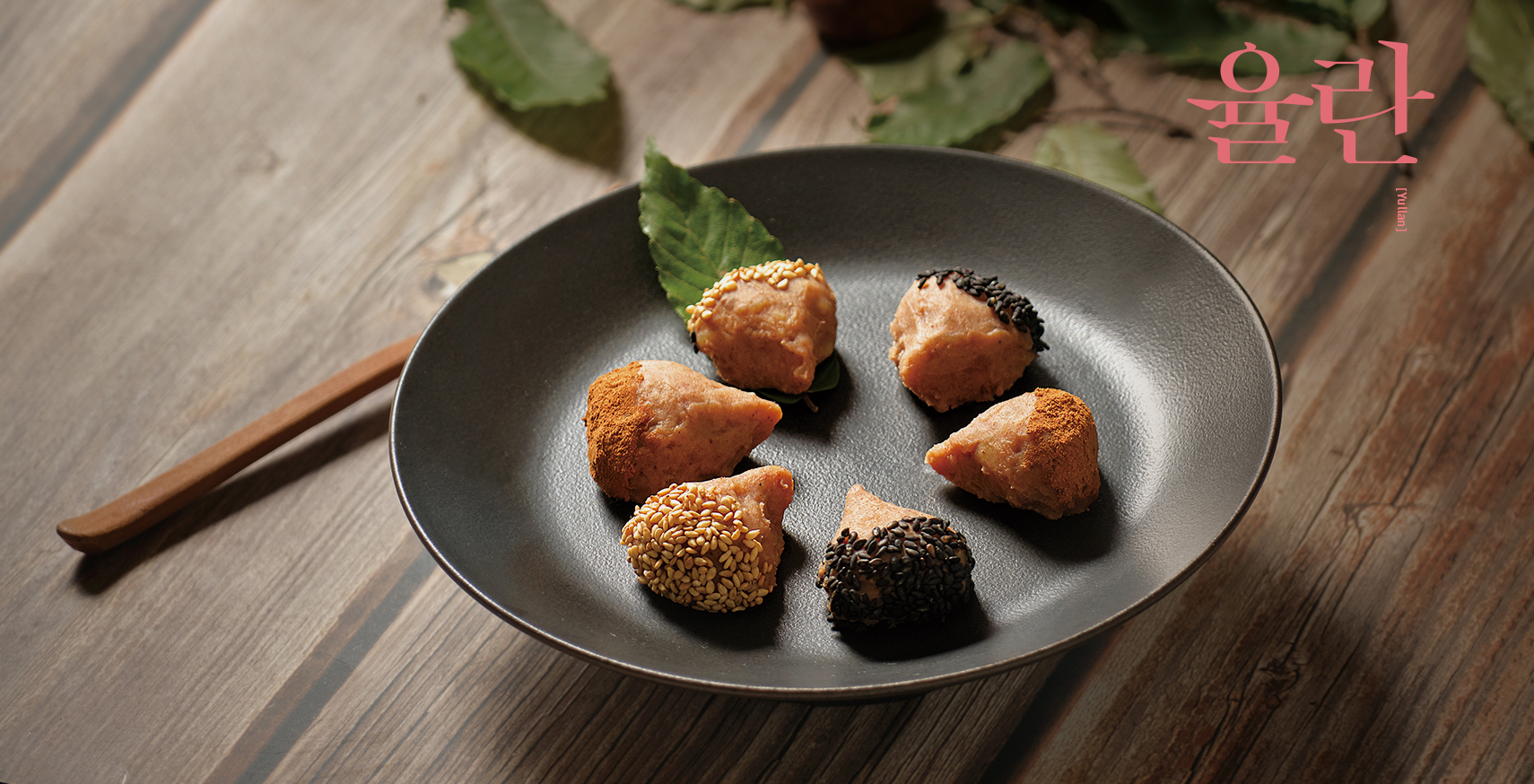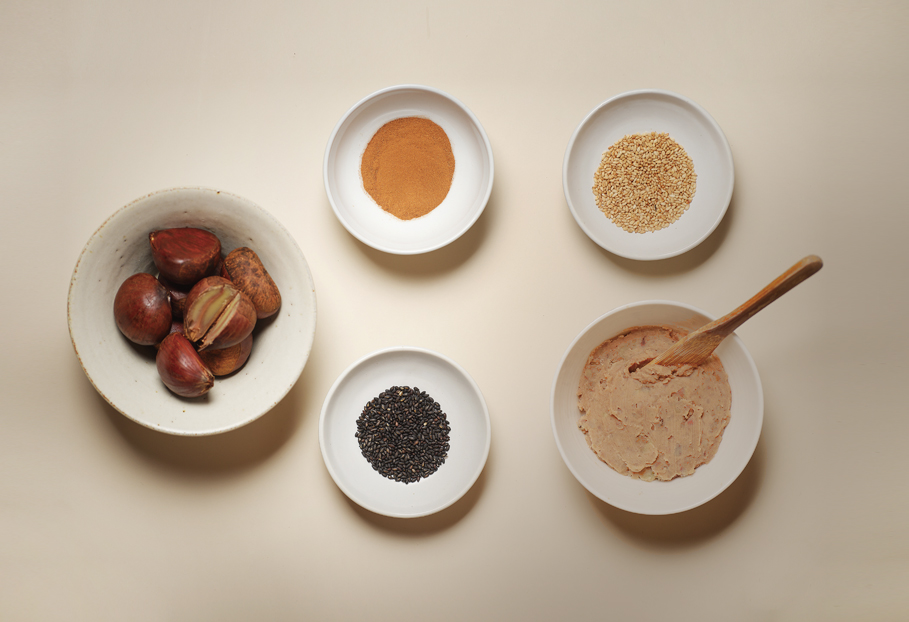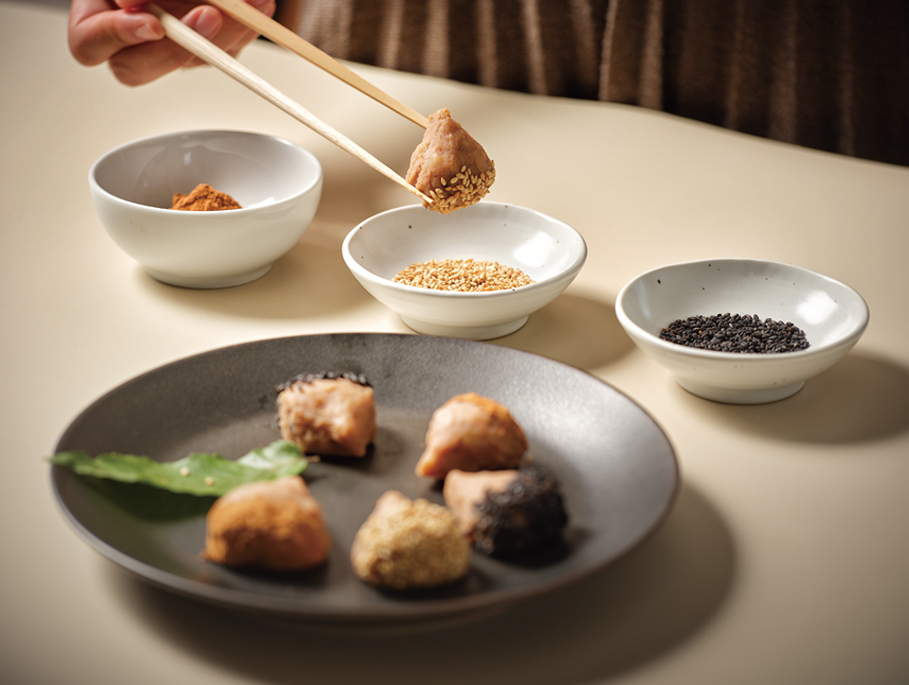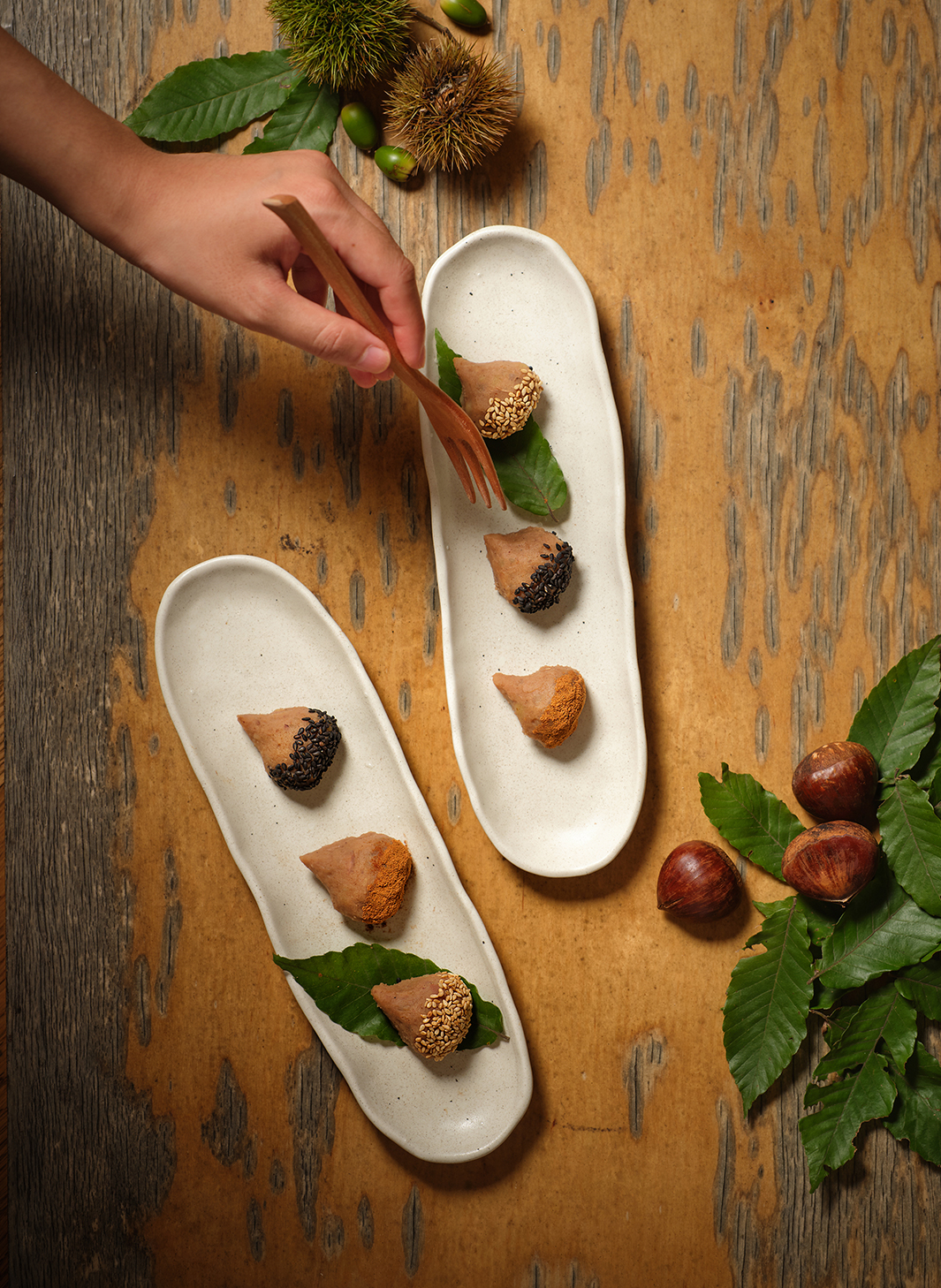October 2021

October 2021
Long ago, yullan, a traditional Korean confection made from boiled chestnuts, could only be enjoyed by nobility. Today, however, the popularity of this subtly sweet treat reaches far beyond.
Written by
Todd Sample,
contributing writer
Photographed by
Studio Kenn

As the dog days of summer pass us by and cooler temperatures bring respite from the repressive heat of July and August, several telltale signs mark the onset of autumn in Korea. These include the skies appearing “higher,” more hikers than usual traipsing along the country’s mountain trails taking in the foliage, and, of course, the sight of fallen chestnut burrs in parks and on sidewalks, cracked ever so slightly open offering, if the squirrels haven’t gotten to them yet, a glimpse of the brown seed within.
Not unlike many other foods in Korean culture, in addition to the flavor or nutritional value, chestnuts in Korea have also played a symbolic role, which despite being rooted in tradition, is still relevant today. These brown seeds are traditionally eaten—more specifically “chewed”—raw on Jeongwol Daeboreum, the first full moon of the Lunar New Year, in hopes for healthy and supple skin.
Yet another way that the appeal of chestnuts has been able to bridge tradition and modernity is in the form of a tasty sweet. yullan, which traces its roots back to the Joseon Dynasty (1392–1897), is a variety of suksilgwa, which itself is a category of hangwa, traditional Korean confections often made with various fruits and sweetened with honey. Yullan, which is made by boiling and mashing peeled chestnuts, and then pressing them through a sieve. The chestnut mash is mixed with cinnamon and honey, with the resulting dough being subsequently reshaped into a confection in the form of a chestnut and finally garnished with pine nut or other nut powder. It is this reshaping of the dough into the original shape of the primary ingredient which is one of the defining characteristics of sukshilgwa.
In addition to chestnuts, jujube and ginger are some of the more common fruits used to make this confection. Due to the difficult preparation process considering the times, not to mention the need to use the highest quality fruits, during the Joseon era, sukshilgwa were only found in the homes of nobles who had high positions in the government and served to guests as a symbol of the host’s high standing. In general, not only yullan, but two or three varieties of sukshilgwa were served on one dish.
 Chestnuts are a key ingredient of yullan.
Chestnuts are a key ingredient of yullan.
 Finish off your yullan with a bit of sesame, cinnamon or other garnish.
Finish off your yullan with a bit of sesame, cinnamon or other garnish.
Traditional Korean confections, whether they be certain varieties of ddeok (rice cake), hangwa, or in this case yullan, are known and prized for the subtlety of their sweetness. When making yullan, the role of honey is as much a binding agent for the chestnut dough as it is for adding sweetness to the treat. In days past, as well as in modern times, the appeal of traditional Korean desserts is certainly not that they are overpoweringly sweet, but that they appear to have been made by artisans who have a deep appreciation for seasonal ingredients and nature. Sweets which lacked subtlety simply were not a part of traditional Korean cuisine. This subtlety aside, however, the flavor palette and texture of yullan are more complex. Cinnamon adds a distinct warmth to yullan, while the crushed pine nuts which form the “cap” of the yullan “chestnut” provide a refreshing crunch to the confection’s otherwise soft texture.
In the past decade in Korea, it is fair to say that the popularity of the modestly sweet desserts and confections of the country’s past has been surpassed by that of cakes, cookies, and pastries. Today, it is much easier to find a store offering macarons or slices of cheesecake than yullan or other varieties of hangwa. As we have seen with other examples of traditional Korea, however, as the country slows down (slightly) from the rapid pace of development it experienced in recent decades, there has been a resurgence in the appeal of, appreciation for, and desire not to lose Korea’s traditions and this, of course, includes the country’s traditional cuisine. Yullan is no exception, although the form in which it is often enjoyed today has evolved.
Rather than enjoying a piece of yullan as the Joseon era yangban once did, today, one is more likely to find a piece of yullan embedded in a piece of ddeokgalbi, a popular Korean dish made from marinated beef rib mince. It is a great credit to the country’s cooks and chefs who continue to strive to find ways of incorporating the culinary traditions of the past into the foods and flavors enjoyed today.
Korean desserts are made by artisans
who have a deep appreciation for seasonal
ingredients and nature.
